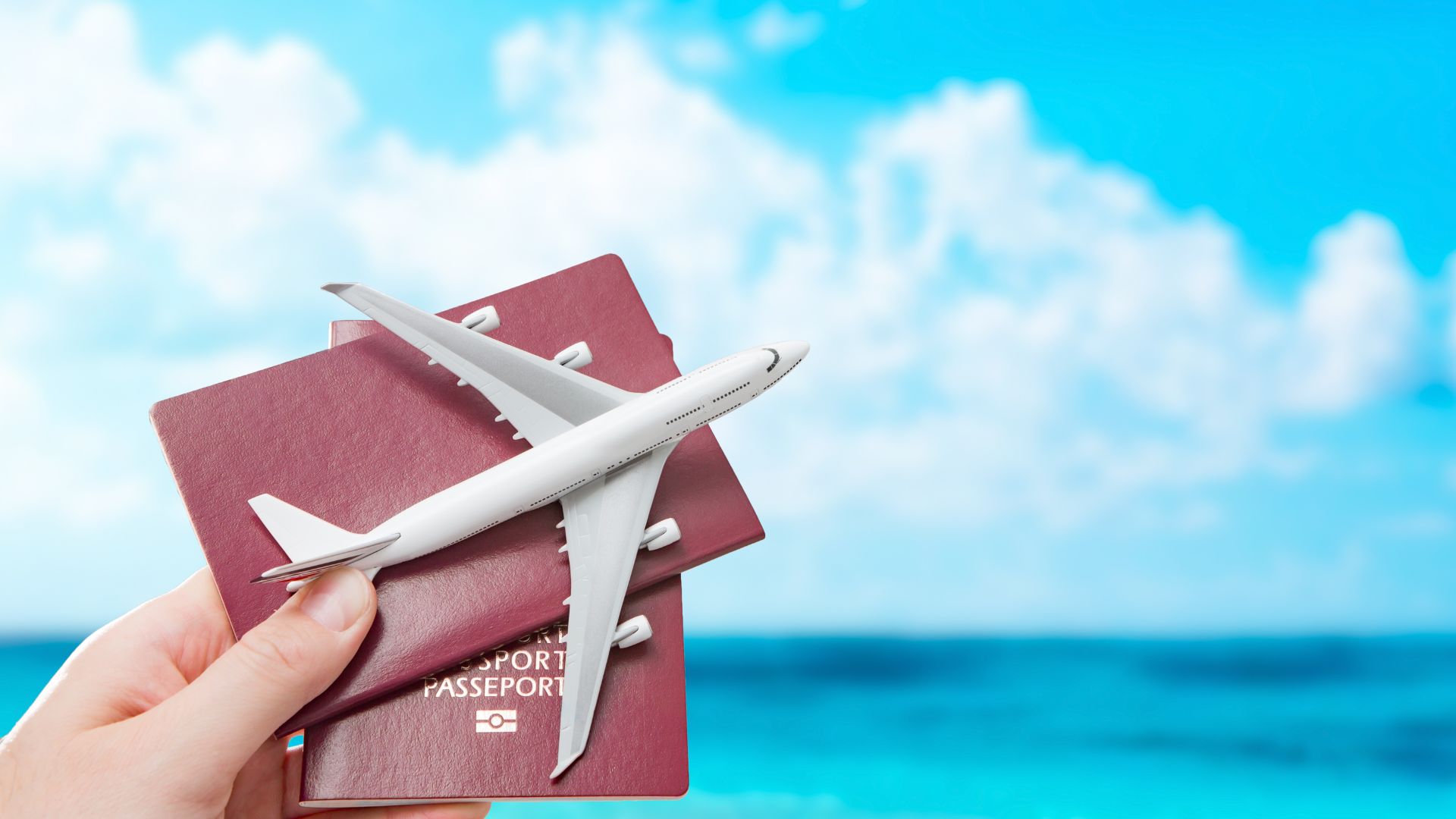Premium Spanish Lessons for the Modern Learner

Breaking Down Language Barriers: How Spanish Can Help You Travel
As a language specialist in Spanish, I am excited to share with you how learning this beautiful language can help break down barriers while traveling. Speaking the local language not only enhances your travel experience but also allows for a deeper connection and understanding of the culture.
Spanish is one of the most widely spoken languages in the world, making it an incredibly useful tool when exploring countries such as Spain, Mexico, Central America, South America, and even parts of the United States. Knowing basic phrases can make a huge difference in navigating transportation systems or ordering food at restaurants.
Not only that, but locals appreciate when visitors take the time to learn their language and may be more willing to offer tips on hidden gems or insider knowledge about the area. So whether you’re planning a trip or simply want to expand your linguistic repertoire, learning Spanish is a valuable investment towards breaking down those pesky language barriers.
¡Vamos! (Let’s go!)
The Advantages Of Learning Spanish For Travel
Spanish is a beautiful and useful language for those who want to travel the world. It is like a magic key that opens doors to new opportunities, unforgettable experiences and friends from different cultures.
Learning this language can be difficult at first, but the rewards are endless. An effective way to learn Spanish is through schools that specialize in teaching the language to foreigners and immersion programs abroad.
The schools offer personalized classes with native teachers, which helps students perfect their pronunciation and grammar in a short amount of time. On the other hand, immersion programs allow you to practice the language every day while living in a Spanish-speaking country.
This not only accelerates language learning but also provides the opportunity to meet local people and become more deeply involved in the culture.
Basic Spanish Phrases For Travelers
As a language specialist, I know that learning a few basic phrases can make a big difference when traveling to a Spanish-speaking country. Here are some common Spanish expressions that can help you communicate and navigate your travel experience:
- Hola (OH-lah): this is a simple but important word for greeting the people you meet.
- Por favor (POR fay-VOR): Used to make polite requests, such as asking for directions or food at a restaurant.
- Gracias (GRAH-syahs): An easy way to show gratitude toward someone after receiving help.
Correct pronunciation is also key when using these phrases. Be sure to emphasize the first syllable and correctly roll the ‘r’ in words like thank you. Don’t be afraid to practice these phrases before your trip; the locals will appreciate your efforts!
In addition, mastering a few cultural aspects could also improve your overall experience. In the next section, we’ll delve even deeper into the general knowledge needed to better understand the local culture and create authentic connections during your visit.
Cultural Insights And Deeper Connections
Understanding the language is a fundamental way to break down cultural barriers to achieve a deeper understanding. Spanish will help you make cross-cultural connections and discover the richness of others’ cultures. Learning Spanish will open up a world of opportunities to travel and enjoy the culture of other countries.
Language Barriers
As a language specialist, it is essential to address the topic of ‘Language Barriers’ when discussing cultural insights and deeper connections. Language barriers can be daunting for travelers who are visiting foreign countries with little knowledge of the local dialects.
Fortunately, there are numerous ways to overcome these obstacles through language immersion programs or language exchange programs. By learning Spanish, you will have an easier time communicating with locals in Latin America and Spain, which will provide you with useful insights into their culture while also establishing more profound connections.
Through speaking Spanish fluently, you’ll enhance your ability to explore various destinations without any difficulty. Therefore, breaking down language barriers by learning Spanish may open up new opportunities for travel as well as personal growth.
Cultural Understanding
Talking about language barriers is only the first step towards a deeper connection with foreign cultures. To truly understand the nuances and complexity of different cultures, one must immerse oneself in them through cultural immersion programs.
In addition to language, we must also be mindful of social etiquette and local customs to avoid accidentally offending or inconveniencing locals.
True cultural understanding comes from learning and directly experiencing how people live, think and feel in their daily environment.
It is important to remember that each culture has its own unique norms and values, which can be challenging at first but very rewarding when you learn to appreciate these differences.
Through proper and respectful cultural immersion, we can make meaningful connections with people from all over the world and expand our global perspective without boundaries.
Let’s keep exploring together!
Intercultural Communication
In our last discussion, we talked about the importance of immersing ourselves in a foreign culture to truly understand its nuances and complexities.
However, even when we do our best to learn the local customs and language, we can still encounter cultural misunderstandings due to our inherent differences.
This is where intercultural communication comes into play! By developing effective intercultural communication skills, we will be able to overcome these obstacles and establish deeper and more meaningful relationships with people from different backgrounds.
Through immersive experiences such as language programs or study abroad, we can gain practical skills to better navigate diverse cultural situations.
Let’s move forward together to discover how to approach intercultural communication without unnecessary barriers or fears.
Spanish In Different Regions Of The World
A Spanish-speaking traveler in a Spanish-speaking country is like a fish in water.
However, when it comes to speaking Spanish in different regions of the world, there are some cultural and linguistic differences to keep in mind.
For example, the way Spanish is spoken can vary significantly between Spain and Latin America due to unique historical and cultural influences.
In Spain, for example, locals may use ‘vosotros’ to refer to an informal group of people (rather than the ‘ustedes’ used in Latin America).
In addition, dialects vary by region: standard Castilian Spanish is spoken primarily in Madrid, while Catalan is common in Catalonia and Galician is popular in Galicia.
Knowing these cultural subtleties not only improves your understanding of the language but also allows for better interaction with the locals.
Tips For Learning Spanish Quickly And Effectively
To learn Spanish quickly and effectively, there are several tips that can help.
First, it is advisable to use online resources to improve your understanding of the language. There are many websites and apps that offer interactive lessons, exercises and fun activities to practice vocabulary and grammar.
In addition, immersing yourself in a Spanish-speaking environment can be very beneficial for accelerating Spanish learning. Immersion programs are an excellent option if you want to fully experience the culture and language while studying it. By being surrounded by native speakers, students have more opportunities to speak Spanish regularly and develop language skills faster.
In addition, these programs also provide an authentic cultural experience by allowing students to explore new places and interact with local people.
Frequently Asked Questions
What Are Some Other Languages Besides Spanish That Can Help Me Travel?
When considering which language can best aid in travel, it’s important to take into account the cultural benefits and job opportunities that come with learning a new tongue.
While Spanish is undoubtedly a popular choice due to its prevalence in many countries around the world, there are other languages worth considering as well.
For example, Mandarin Chinese is spoken by over a billion people globally and is an essential business language in today’s global economy.
French remains widely used across Europe and Africa, while Arabic is crucial for navigating much of the Middle East and North Africa.
In short, there are plenty of options depending on your interests and intended destinations – but regardless of what you choose to learn, mastering a foreign language brings countless rewards beyond simply making communication easier.
Can I Get By Without Knowing Any Spanish While Traveling?
As a language specialist in Spanish, I highly recommend learning the basics before embarking on your travels to Spanish-speaking countries.
While it is possible to get by without any knowledge of the language, knowing even just a few key phrases can make all the difference in communication and understanding cultural nuances.
Tips for communication include using simple vocabulary and speaking slowly, as well as utilizing nonverbal cues such as gestures and facial expressions.
The advantages of learning Spanish are vast, from being able to navigate menus and ask for directions with ease to forming deeper connections with locals and gaining a greater appreciation for their culture.
Don’t miss out on these incredible experiences – take the time to learn some basic Spanish before your next adventure!
How Do I Know Which Spanish Dialect To Learn?
When choosing which Spanish dialect to learn, it’s important to consider regional variations and cultural differences.
The most widely spoken dialect is Castilian Spanish, used in Spain and parts of Latin America. However, there are many other dialects such as Mexican Spanish or Argentinean Spanish that have their own unique vocabulary and grammar rules.
It’s recommended to choose a dialect based on your travel destination or personal interest. Additionally, learning the local slang and expressions can help you better connect with locals and immerse yourself in the culture.
Ultimately, the key is to be open-minded and adaptable when navigating different linguistic contexts while traveling.
Are There Any Cultural Differences I Should Be Aware Of When Speaking Spanish?
When speaking Spanish, it’s important to be aware of cultural norms and language etiquette.
In some countries, using formal titles and greetings is expected while others prefer a more casual approach.
Additionally, body language can vary greatly between regions, so it’s crucial to pay attention to nonverbal cues as well.
It’s also worth noting that certain words or phrases may have different connotations depending on the country you’re in.
As a language specialist in Spanish, I recommend taking the time to research these differences before your trip so that you can communicate effectively and respectfully with locals.
What Resources Are Available For Learning Spanish?
If you’re looking to learn Spanish, there are plenty of resources available online.
Online courses offer a structured approach to learning the language and can be completed at your own pace.
Language exchange programs provide an opportunity for conversation practice with native speakers, which can greatly improve your fluency.
As a Spanish language specialist, I highly recommend utilizing these resources to enhance your understanding of this beautiful and widely spoken language.
With dedication and consistent effort, you’ll soon find yourself speaking Spanish with ease!
Conclusion
As a Spanish language specialist, I can confidently say that learning Spanish is one of the best things you can do to break down language barriers while traveling. Of course, there are other languages that may also prove helpful, but with over 500 million speakers worldwide and many countries where it’s an official language, Spanish is definitely one to consider.
Now, some may argue that they can get by without knowing any Spanish while traveling. While this may be true in some cases, having at least a basic understanding of the language can greatly enhance your travel experience. You’ll be able to communicate more effectively with locals, navigate public transportation systems with ease, and even gain access to hidden gems off the beaten path. Plus, showing effort and respect towards another culture through attempting their language will often endear you to locals who will be eager to help you out.
One objection some people might have is not knowing which dialect of Spanish to learn. While there are certainly variations between different dialects (such as slang or accent), don’t let this deter you from learning the basics. The good news is that most native Spanish speakers will understand each other regardless of dialect differences.
And if you’re planning on visiting a specific country or region, it’s worth doing some research ahead of time to familiarize yourself with local vocabulary and customs. Overall, whether you’re planning a trip abroad or simply want to expand your linguistic horizons, learning Spanish opens up countless opportunities for cultural exchange and personal growth.
With resources such as online courses, apps like Duolingo or Babbel, and immersion programs available around the world, there’s no excuse not to start exploring this beautiful language today!







